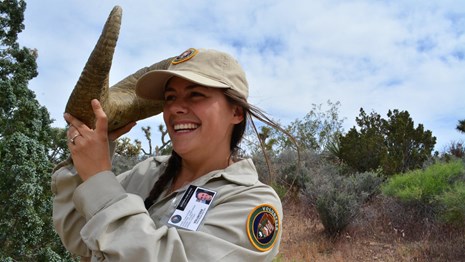ANIMAL ADAPTATIONS
- communitynatureconnection
- May 25, 2020
- 3 min read

ESPAÑOL ABAJO

(Pre-K - 2nd Grade)
This doesn’t explicitly cover adaptations, but can open the door to a conversation about how different species have evolved or adapted to their environment. You'll definitely feel the amphibian love after watching (and singing along with) this cute music video.
Invent an Insect (3rd - 5th Grade)
Have students study some insects of their own choosing, encouraging them to make inferences about what function some of their adaptations might serve. Then use the provided worksheet to have students invent their own insect. What adaptations does it have to survive?
Animal & Plant Adaptations | Science Lesson For Kids (3rd - 5th Grade)
Generation Genius has made their interactive NGSS-aligned lessons free until 08/31 (you’ll still need to create an account). These lessons include teacher materials, quizzes, videos, glossaries and discussion or writing prompts. Some of the lessons also include DIY activities for students to complete at home.
Skype a Ranger from Joshua Tree NP (3rd Grade - HS)
Invite a Ranger into your virtual classroom to teach students about animal and plant adaptations in Joshua Tree National Park. Sessions need to be reserved in advance.
PORTS (All ages)
California State Parks have numerous sessions that address animal and plant adaptations. The live Zoom sessions can be joined (they release their topics about a week ahead) or you can see the previous sessions. Here are some examples of past sessions about adaptations on their youtube channel:
Designer Ears: Biology & Perception Science Activity (K - 5th Grade)
This activity has students consider how ears help us perceive information, and how the shape of ears can lead to a different sensory experience. Younger students will need help with the instructions of the task, but 3rd - 5th graders should be able to do the activity independently.
Eat Like a Bird (K - 5th Grade)
A practical experiment activity that has students question how and why birds have beaks in different shapes. Younger students will need help understanding the instructions, and older students may need extra questions such as,
Using examples, what is an adaptation?
Research a native bird. Explain why their beak is shaped the way it is.
How do you think birds developed differently shaped beaks?
Why do frogs say "ribbit"? (1st - 2nd Grade)
Students question and create in this interactive lesson about the sounds that animals make. It includes videos, questions, interactive activities and crafts, as well as a transcript of the videos.

Imagine Adaptation: Physical Characteristics of Birds (2nd - Middle School)
Students who are independently reading can self-guide this lesson that encourages them to consider physical characteristics of native birds, and how they have evolved. The activity and learning can be done with multiple students if you have siblings that would like to work together, too.
Aquarium Live: The Aquarium's Online Academy (Pre-K - High School)
The Aquarium of the Pacific has daily live lessons aimed at different age brackets: Pre-K, K-2nd, 3rd-5th, 6th-8th, & 9th-12th. Students can tune in to learn about the animals, habitats, and their adaptations. The lessons are recorded and can be accessed after the session.

(Kinder - 5⁰ grado)
Una práctica actividad de experimento que hace que los estudiantes se pregunten cómo y por qué las aves tienen picos en diferentes formas. Los estudiantes más jóvenes necesitarán ayuda para entender las instrucciones, y los estudiantes mayores pueden necesitar preguntas
Utilizando ejemplos, ¿qué es una adaptación?
Investigar un pájaro nativo. Explique por qué su pico tiene la forma en que está.
¿Cómo crees que las aves desarrollaron picos de forma diferente?
(3⁰ grado - Secundaria)
Muestre a sus estudiantes este video para que empiecen a conocer la diferencia en las adaptaciones de los animales en el agua y en la tierra.
(5⁰ grado - Secundaria)
Muestre a sus estudiantes este video para continuar ampliando su conocimiento sobre adaptaciones de animales únicas con explicaciones más detalladas sobre por qué los animales tienen partes específicas del cuerpo.
(3⁰ grado - Secundaria)
Desde casa, puedes crear un "Hotel Para Bichos", elaborado por el Natural History Museum, hecho de materiales de reciclaje que invitarán a diferentes bichos. Preguntas que puedes hacer sobre las adaptaciones de los insectos que ves:
¿De qué color es el insecto que ves?
¿El insecto tiene camuflaje con el color de las plantas o la suciedad?
¿Qué crees que comen?
¿Cuántas patas tiene?
¿tiene alas?
Recoge Y Observa Bichos en Casa (5⁰ grado - Secundaria)
Desde casa, puedes aprende a crear un colector de insectos a hecho de materiales que puedes encontrar en casa, elaborado por el Natural History Museum. Preguntas que puedes hacer sobre las adaptaciones de los insectos que ves:
¿De qué color es el insecto que ves?
¿El insecto tiene camuflaje con el color de las plantas o la suciedad?
¿Qué crees que comen?
¿Cuántas patas tiene?
¿tiene alas?
XOXO,















Comments